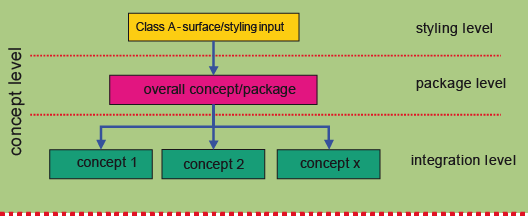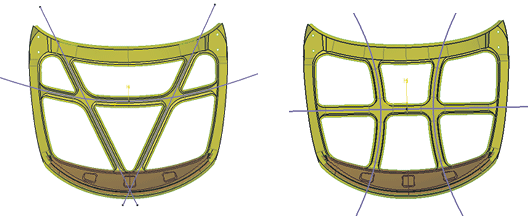|
|
 |
|
Concept level
|
|
The concept level is divided into 2 sections and has an input and an output. The input is the Class A-surface design. At this point information about form and configuration of the product flows into the detailed design. At package level the space within the product is distributed with the help of fixed dimensions, form and legal requirements. The objective of passing on of overall concept and the package data is the basic idea at concept level. At concept level there are catchwords like haptics, in-service strength, modal analyses, crash simulation, quality, strength calculations, generation of geometry from FE-meshes, topology optimisation tools, etc. How can we bring all these requirements into the concept level? The integration level is where all the possible concepts can be married to the overall package concept.
|
 |
|
At integration level everything is allowed that a CAD-program can offer in functionality. Beside real geometry, FE-data or visualisation data can be used as well. We can also use other geometry creation methods, such as „Behaviour Modelling“ or „Knowledge-based Design“, etc.
At BMW for example the concept selection for the bonnet system is assisted by the parametric design method „Behaviour Modelling“, for stiffness reasons different support rib structures can be examined. The rib layout has a direct effect on all the parts in the system and the employed joining technology.By the evaluation of the concept variants illustrated here it emerges that in the case of concept 1 only one lock would be necessary; with concept 2, two would be required.
|
 |
|
In this example it is apparent that at concept level the parts list plays no role, just as little as the detailed description of components. Here the single-model technique comes into play - only by this the concept optimisation of a system is actually possible. The single-model technique includes a system, e.g. one single „CATPart“.
The concept level distinguishes itself by:
Concept sections, development sections, visualisation data and FE-meshes have the same value as detailed 3D geometry.
The objective is a maximum coherency of the system and not of the components.
As much geometry creation as necessary, as little as possible.
|
 Back Back |
|
 |
|